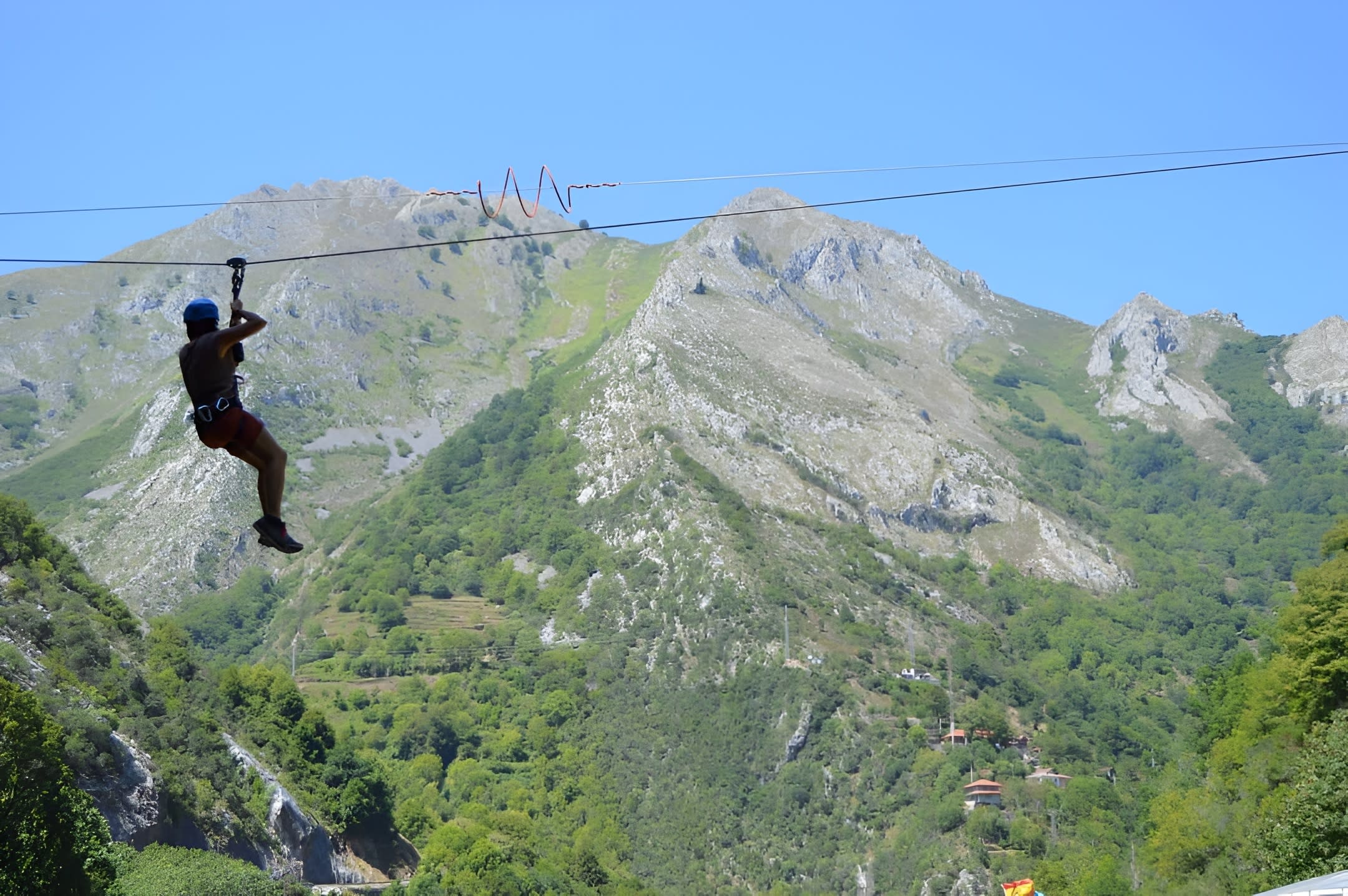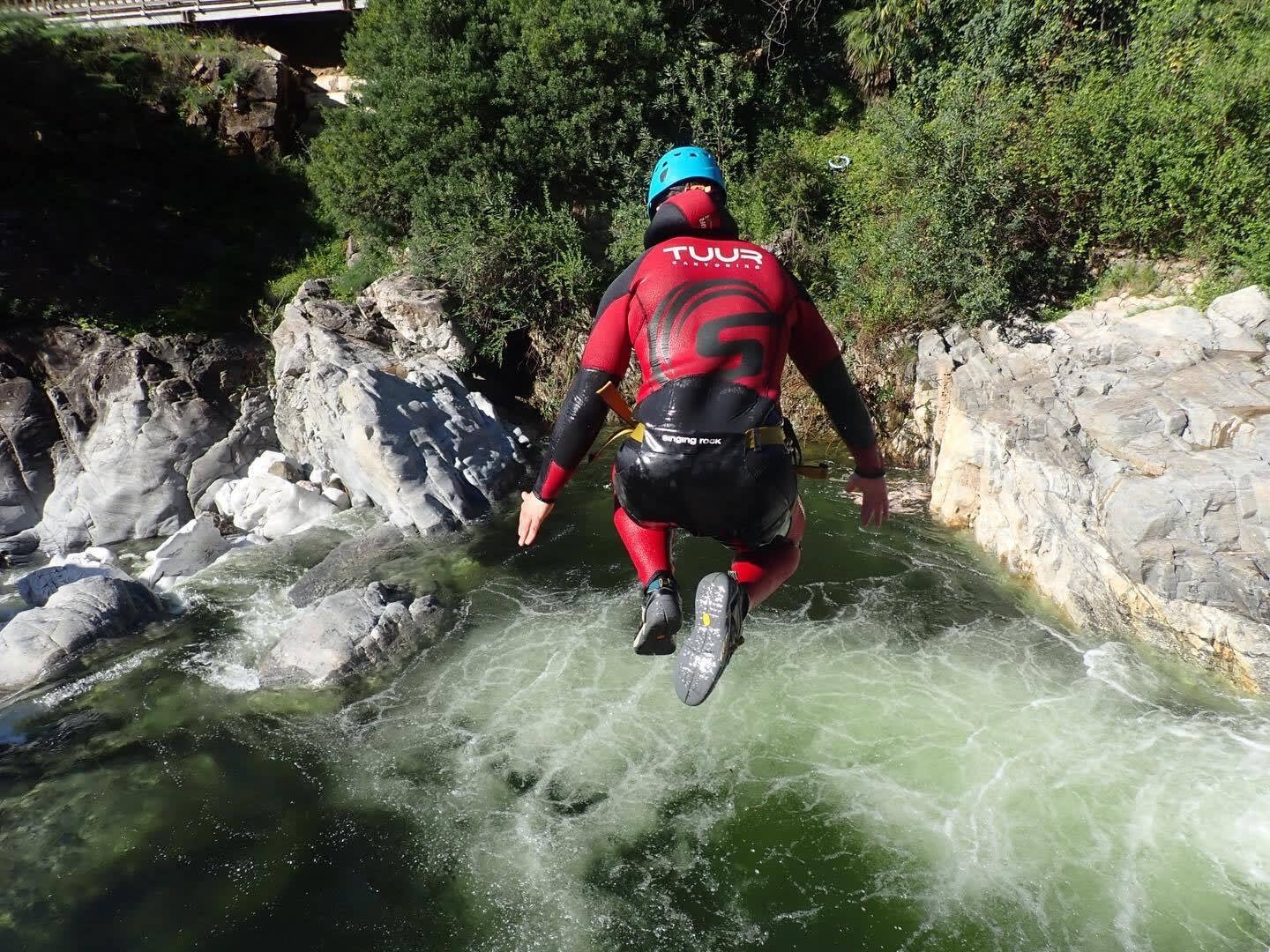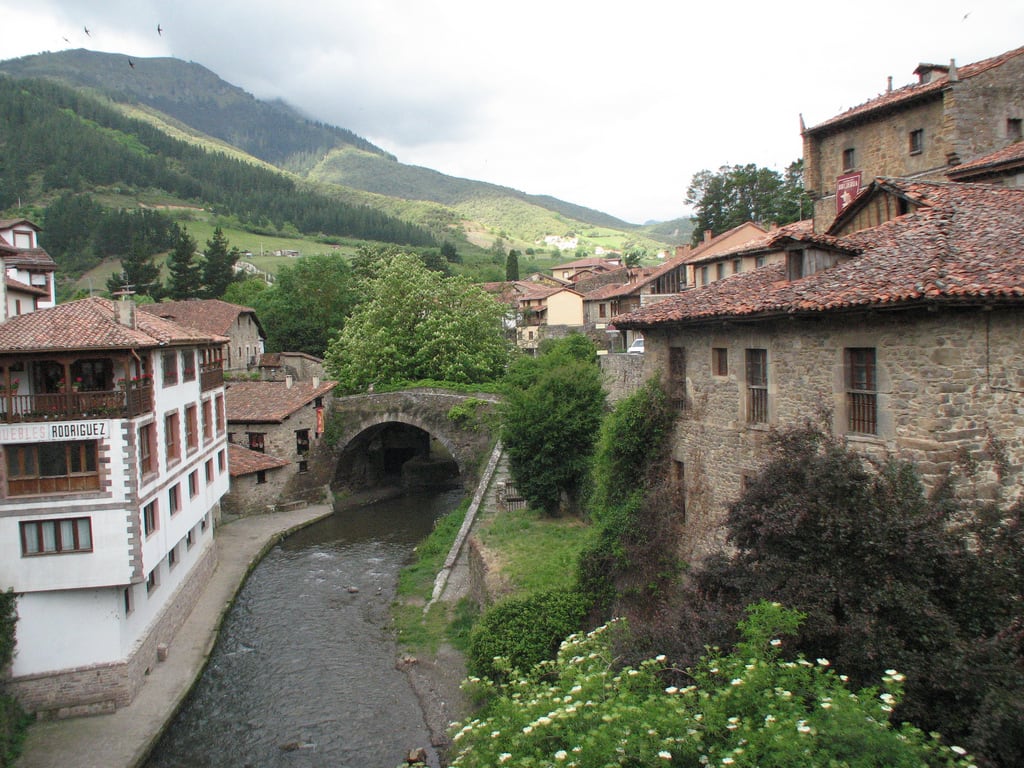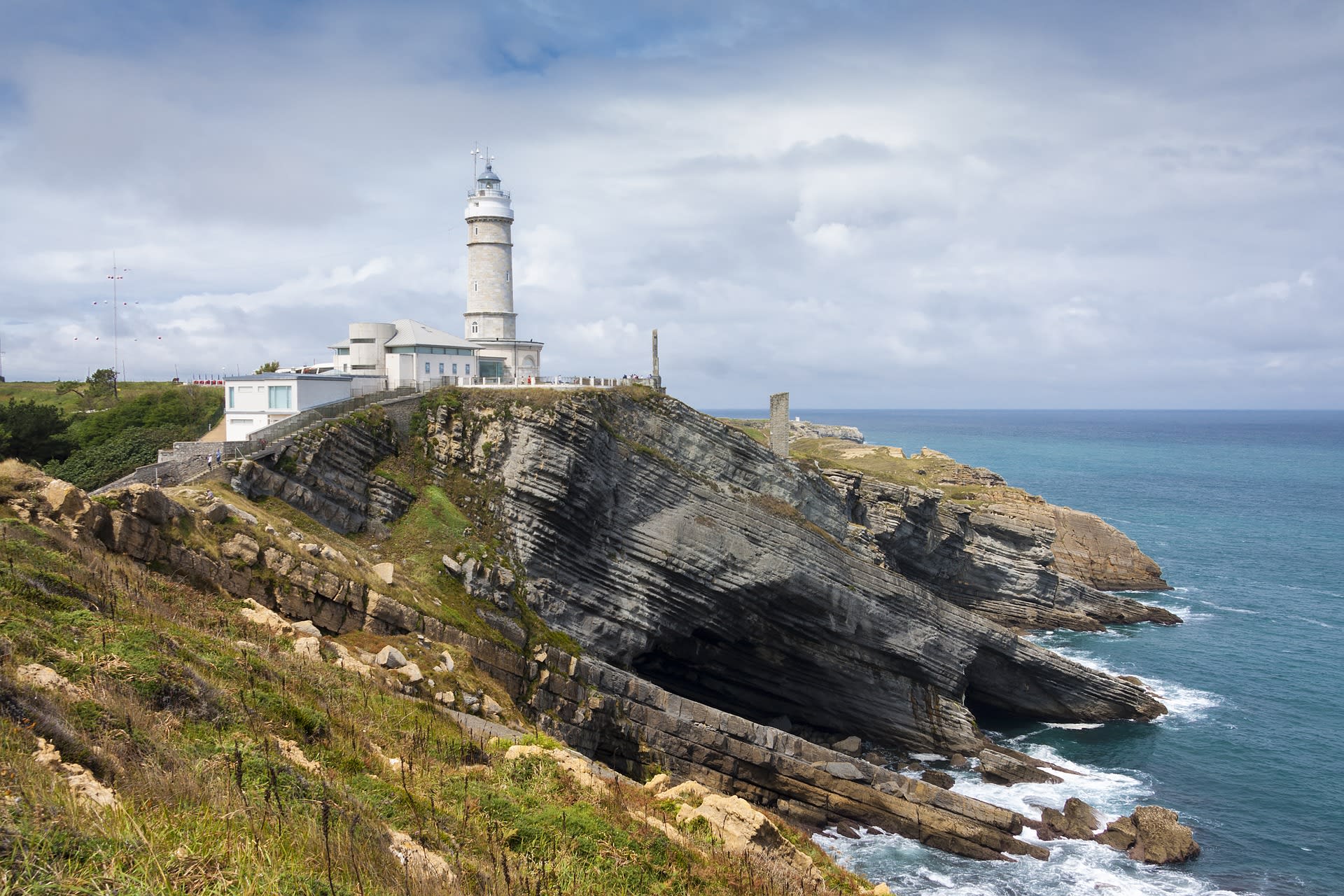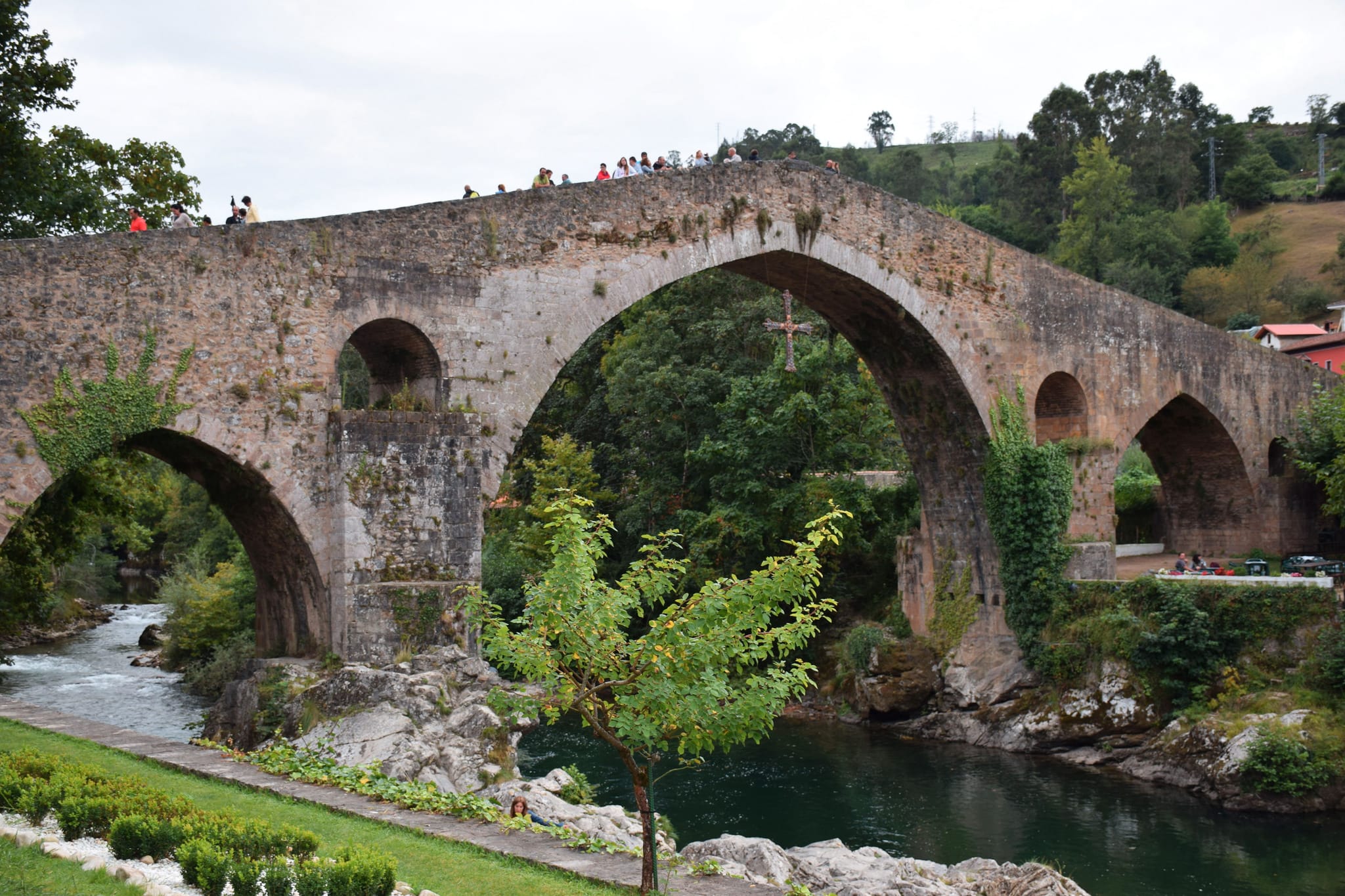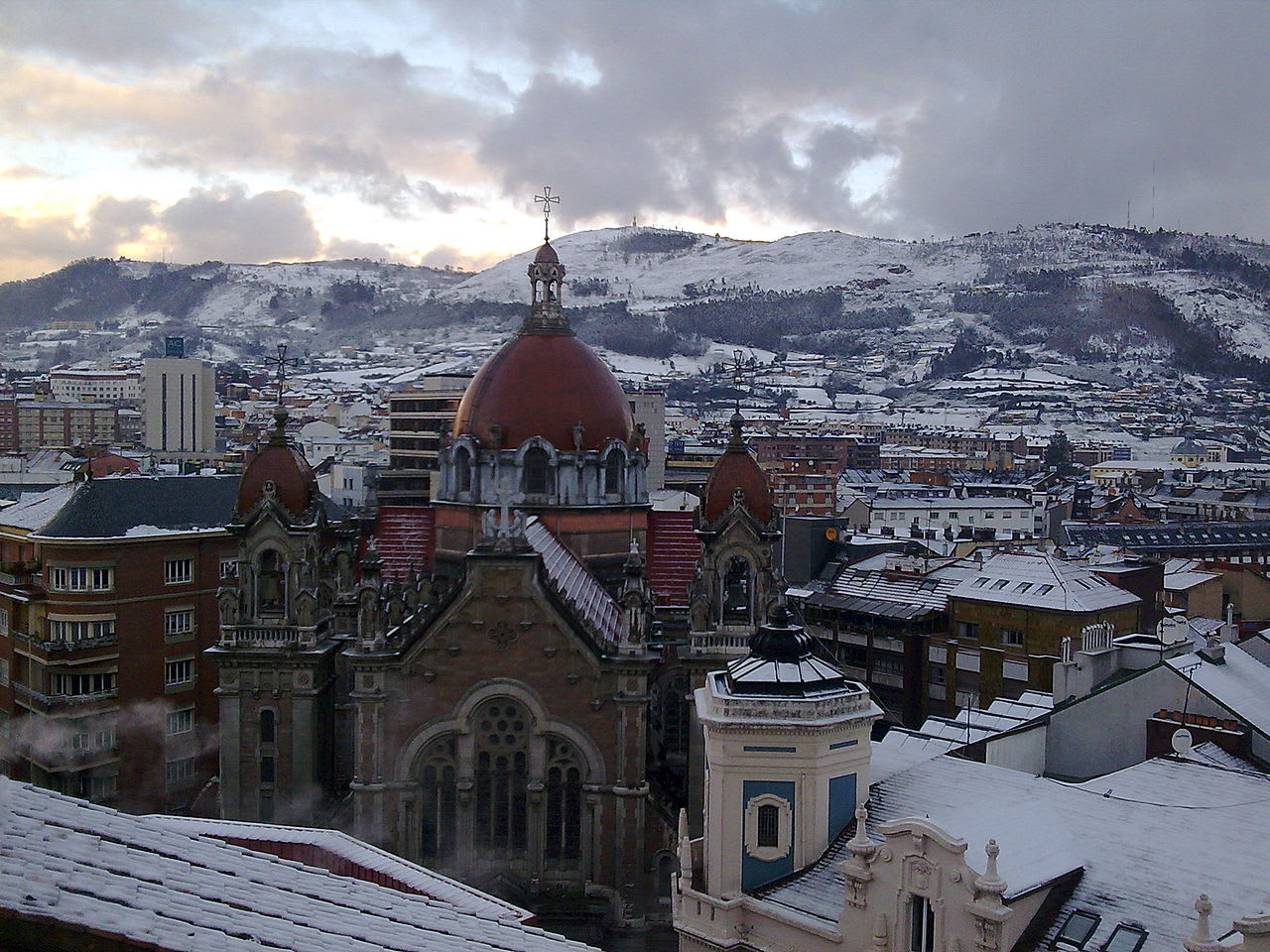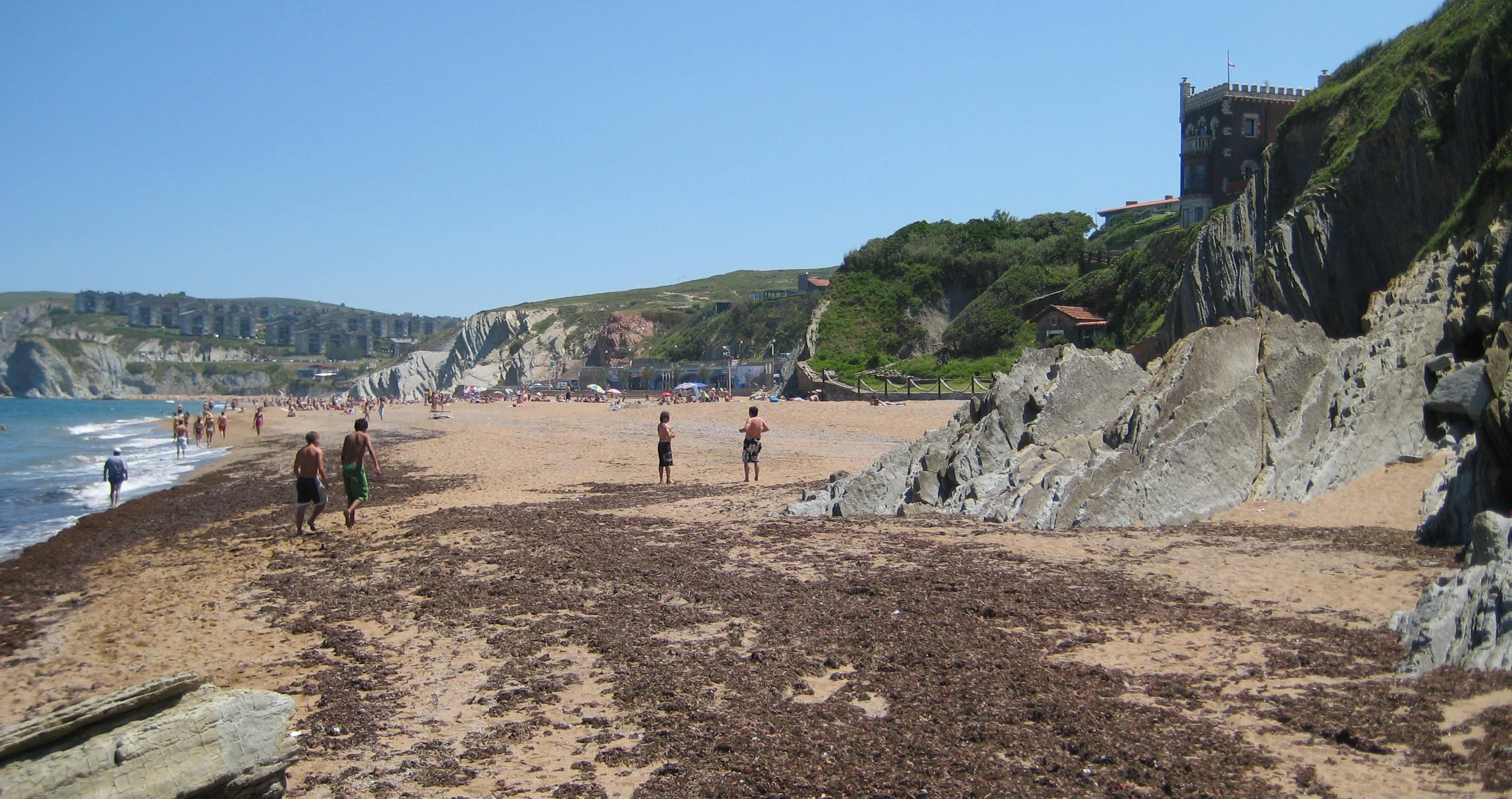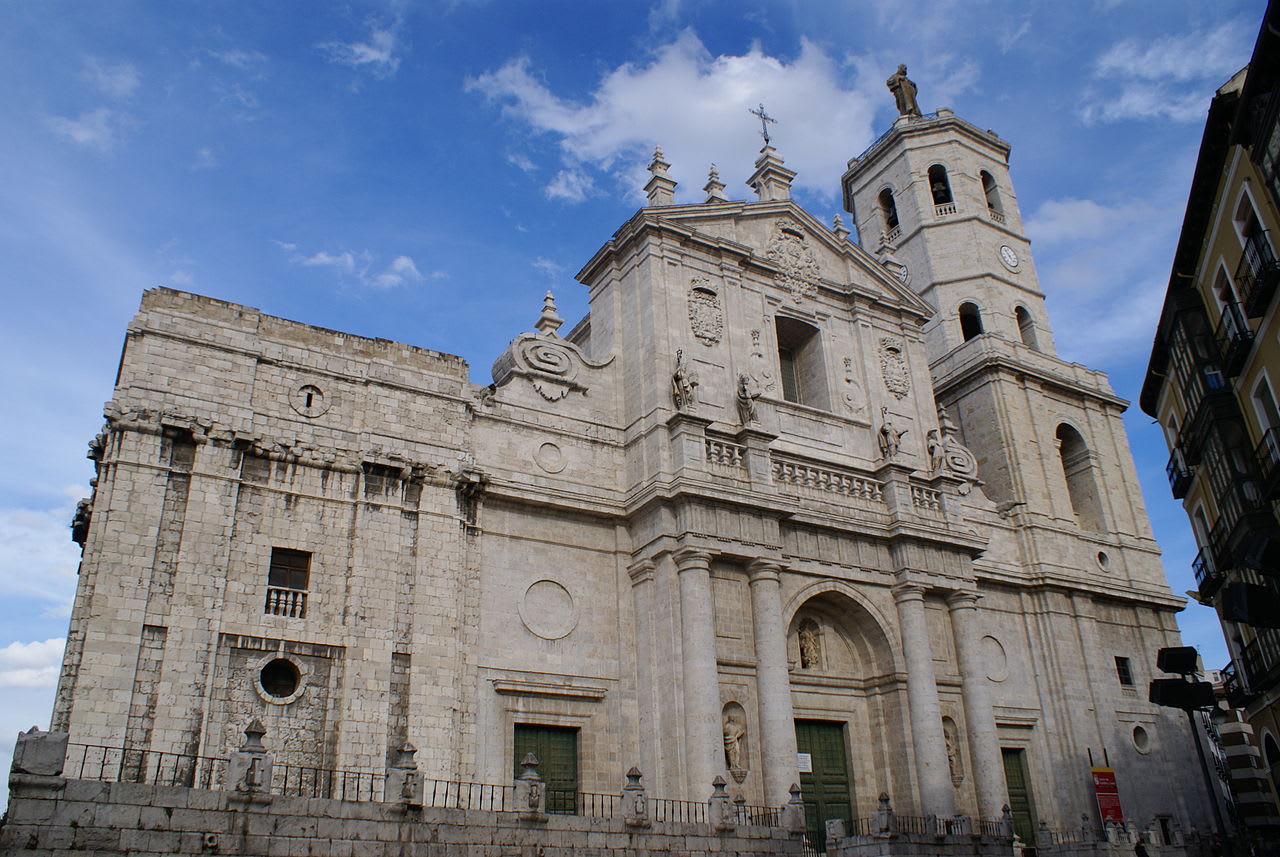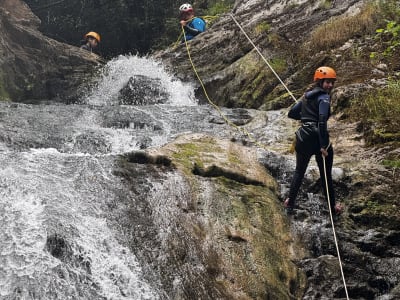
Les meilleures activités à Pics d'Europe
Toutes nos activités à Pics d'Europe

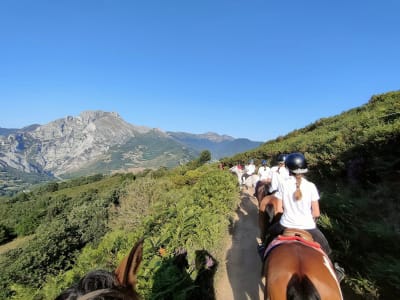
Balade à cheval dans les Pics d'Europe depuis Potes, Cantabrie
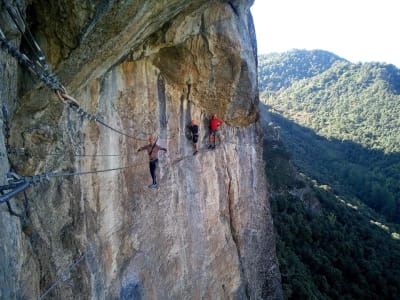
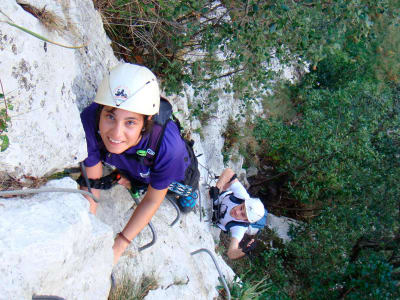
Via Ferrata Los Puentes à La Hermida, Parc national des Picos de Europa
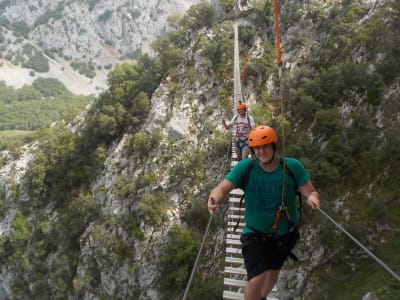

Via ferrata El Milar et Escalera al Cielo à La Hermida, Picos de Europa
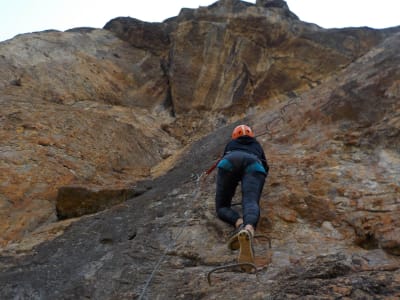
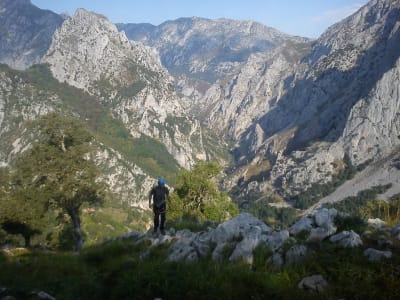
Via Ferrata L'escalier du ciel + El Milar à La Hermida, Picos de Europa
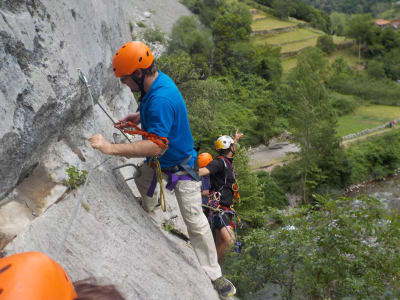
Via ferrata El Milar à La Hermida, Picos de Europa
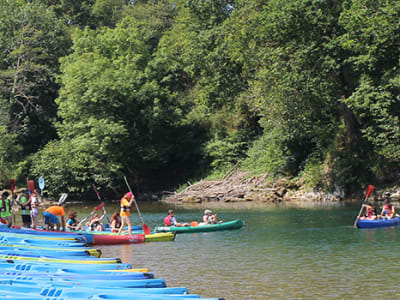
Kayak sur la rivière Sella depuis Cangas de Onis, Asturies
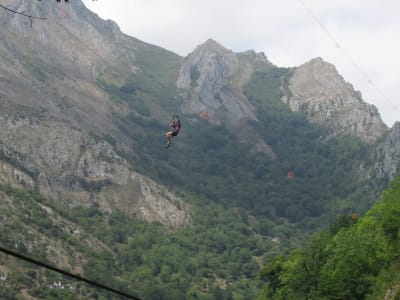
Circuits de tyroliennes dans le parc naturel de Ponga
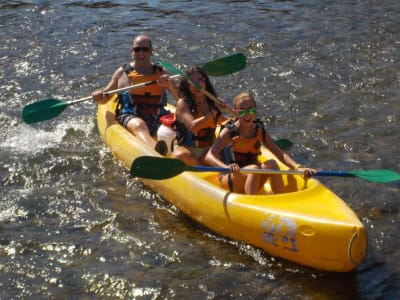
Location de canoë-kayak sur la rivière Deva de Panes à Unquera

Canyoning dans la rivière Navedo près de Potes, Cantabrie

Balade à cheval dans les Pics d'Europe depuis Potes, Cantabrie

Via ferrata La Hermida, Picos de Europa

Via Ferrata Los Puentes à La Hermida, Parc national des Picos de Europa

Via ferrata de La Hermida, Picos de Europa

Via ferrata El Milar et Escalera al Cielo à La Hermida, Picos de Europa

Via ferrata de Camaleño à Los Llanos, Picos de Europa

Via Ferrata L'escalier du ciel + El Milar à La Hermida, Picos de Europa

Via ferrata El Milar à La Hermida, Picos de Europa

Kayak sur la rivière Sella depuis Cangas de Onis, Asturies

Circuits de tyroliennes dans le parc naturel de Ponga

Location de canoë-kayak sur la rivière Deva de Panes à Unquera
Découvrez les Picos de Europa : Un joyau caché dans le nord de l'Espagne
Nichés dans le nord de l'Espagne, les Picos de Europa constituent l'un des trésors naturels les plus impressionnants du pays. S'étendant sur les régions des Asturies, de la Cantabrie et de la Castille-et-León, cette chaîne de montagnes spectaculaire fait partie des monts Cantabriques. Des pics calcaires imposants, des vallées verdoyantes, des gorges profondes et de charmants villages de montagne font des Picos de Europa un paradis pour les amoureux de la nature et les amateurs de sensations fortes.
Contrairement aux destinations espagnoles les plus fréquentées, les Picos de Europa restent relativement méconnus et offrent une échappée sereine et authentique. Que vous soyez attiré par ses paysages à couper le souffle, sa richesse culturelle ou ses palpitantes aventures en plein air, les activités à faire dans les Picos de Europa ne manquent pas.
Principales activités de plein air dans les Picos de Europa
Randonnée et trekking
La randonnée est sans doute l'activité la plus populaire dans les Pics d'Europe. La région dispose d'un vaste réseau de sentiers pour tous les niveaux. Les célèbres gorges de Cares (Ruta del Cares) sont incontournables. Elles offrent des vues époustouflantes le long d'un sentier à flanc de falaise qui relie les villages de Caín et de Poncebos. L'ascension du Refugio de Urriellu, sous le pic emblématique Naranjo de Bulnes, et les routes panoramiques autour des lacs de Covadonga sont d'autres points forts de la région.
Canyoning et Via Ferrata
Pour les amateurs d'adrénaline, le canyoning dans les Picos de Europa signifie glisser le long des cascades, sauter dans des piscines cristallines et descendre en rappel dans des gorges étroites. Les rivières autour du Desfiladero de los Beyos et de La Hermida offrent des aventures de canyoning à la fois palpitantes et accessibles.
Les Via Ferrata de la région sont un excellent moyen d'escalader des falaises verticales à l'aide de câbles fixes, d'échelles et de ponts, avec des vues spectaculaires sur les montagnes en guise de récompense. Les itinéraires les plus populaires près de La Hermida offrent des possibilités pour les débutants comme pour les confirmés.
La spéléologie et l'archéologie
La composition calcaire des Picos a donné naissance à un vaste réseau de spéléologies. Les expériences de spéléologie révèlent des rivières souterraines, de vastes cavernes et des formations rocheuses anciennes. Certains itinéraires conviennent aux débutants, tandis que d'autres offrent des défis techniques aux spéléologues expérimentés.
Escalade
Le Naranjo de Bulnes (Picu Urriellu) est un sommet légendaire pour les alpinistes. Avec des voies de différents niveaux, c'est un endroit de choix pour ceux qui souhaitent tester leurs prouesses dans l'un des paysages alpins les plus emblématiques d'Europe.
Vélo de montagne et vélo électrique
Les pistes sinueuses à travers les forêts et les cols de montagne rendent la région idéale pour le vélo de montagne. La location de vélos électriques est de plus en plus populaire et permet d'explorer les sentiers de haute altitude et les villages isolés sans trop d'efforts.
Vol en parapente
Pour une vue plongeante sur les sommets déchiquetés et les vallées luxuriantes, voler en parapente depuis les pentes des montagnes près de Cangas de Onís ou de Fuente Dé est une expérience inoubliable. Les conditions sont souvent idéales pour les vols en tandem, même pour les débutants.
Conseils locaux pour visiter les Picos de Europa
Le temps dans les Picos peut changer rapidement. Prévoyez des couches, des vêtements imperméables et des chaussures de randonnée solides, même en été. La réception des téléphones portables peut être inégale dans les zones reculées. Il est donc recommandé de télécharger des cartes hors ligne.
La plupart des villages disposent de petits restaurants familiaux où vous pourrez déguster des spécialités locales telles que la fabada asturiana, le queso de Cabrales et la sidra natural. Le fait de séjourner dans des maisons d'hôtes rurales ou des casas rurales ajoute au charme de la région et soutient l'économie locale.
Renseignez-vous toujours auprès des guides locaux ou des centres d'accueil sur l'état des sentiers et les mises à jour en matière de sécurité. Les activités guidées comprennent souvent l'équipement nécessaire et l'assurance.
Meilleure période pour visiter les Picos de Europa
Le printemps (d'avril à juin) et l'automne (de septembre à octobre) offrent un temps doux, des paysages éclatants et moins de touristes, ce qui en fait des périodes idéales pour les aventures en plein air dans les Picos de Europa. Les fleurs sauvages fleurissent au printemps, tandis que l'automne apporte un feuillage doré dans les forêts.
L'été (juillet et août) est la haute saison, en particulier autour des lacs de Covadonga. Bien que le temps soit généralement chaud, il faut s'attendre à des foules dans les endroits les plus populaires. Les départs matinaux permettent d'éviter la chaleur et la circulation.
L'hiver transforme les hauteurs en un pays des merveilles enneigé. Si certaines routes et certains sentiers ferment, les zones les plus basses restent accessibles pour la randonnée et offrent une atmosphère paisible et mystique.
Comment se rendre aux Pics d'Europe
Les Picos de Europa sont facilement accessibles depuis plusieurs grandes villes :
- Depuis Oviedo: environ 1,5 heure de route jusqu'à Cangas de Onís ou Arenas de Cabrales. Des bus circulent tous les jours, mais la location d'une voiture offre plus de flexibilité.
- Depuis Santander: Environ 2 heures de route jusqu'à Potes ou Fuente Dé. Des bus publics sont disponibles mais moins fréquents.
- Depuis León: Environ 2 heures jusqu'à Posada de Valdeón ou Riaño. Des routes pittoresques traversant des cols de montagne font du voyage lui-même une partie de l'aventure.
Les aéroports les plus proches sont ceux d'Oviedo (Asturias Airport), de Santander et de León, qui proposent tous des services de location de voitures. Pour les voyageurs internationaux, il est recommandé de prendre un vol de correspondance à Madrid ou à Barcelone.
Que vous soyez à la recherche de paysages accidentés, d'activités palpitantes ou d'une échappée tranquille dans la nature, la visite des Picos de Europa vous promet une expérience de plein air inoubliable dans l'un des parcs nationaux les plus majestueux et les moins connus d'Espagne.
Nos guides de voyage sur Pics d'Europe
Avec Manawa, vous êtes entre de bonnes mains.
Nous nous engageons à rendre vos activités de plein air extraordinaires. Bénéficiez de conseils d'experts, d'un service proche de vous, et vivez des moments inoubliables avec Manawa.
